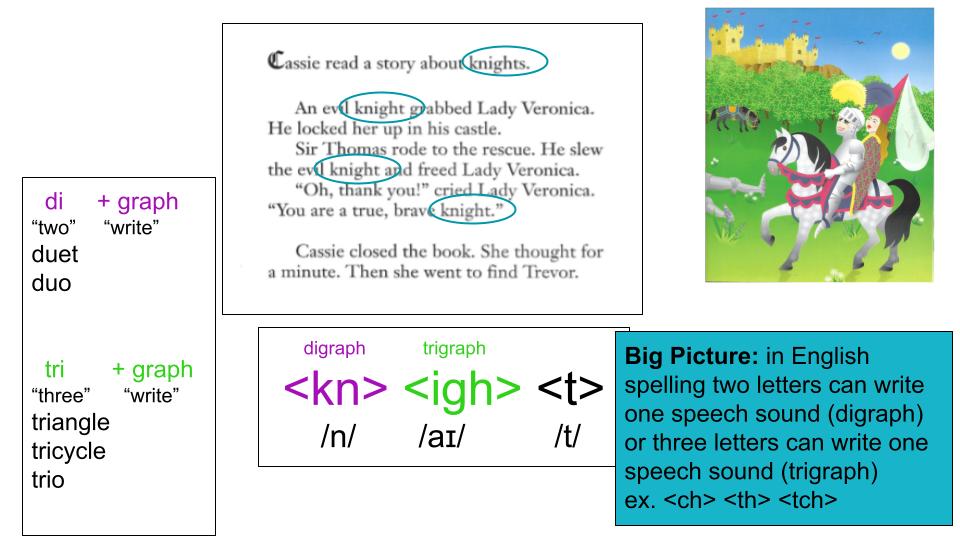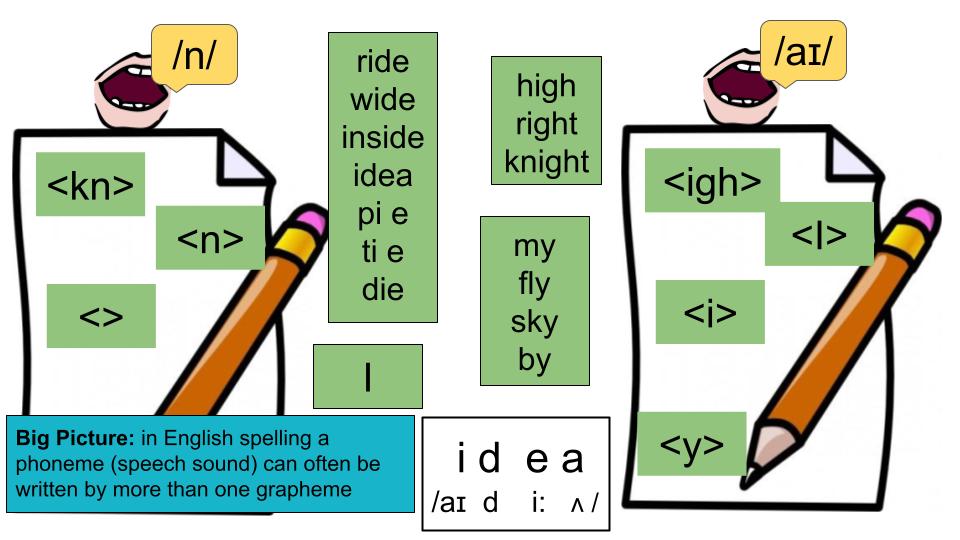What is Word Inquiry?
Word inquiry, also known as Structured Word Inquiry (SWI), is based on the understanding that the primary job of English spelling is not to represent sound. Instead, it’s primary job is to represent meaning. There is a reason for every letter in every word, but that reason is not always to convey a sound. Once we understand that, the spelling of English words no longer looks random or erratic.
Instead, English is highly structured with spelling conventions we can follow and explanations we can uncover. For example, the <w> in ‘two’ is there to signal its relationship to the family of words ‘twin, twelve, twenty, between’, etc. and to distinguish it from the function words ‘to’ and ‘too’. The <e> in ‘come’ is there to distinguish it from the prefix <com-> and to take the longer spelling which marks it as a lexical (content) word.
When teaching with Word Inquiry we focus on the structure and meaning of words by building families on the base of a word. For example, the base <fuge> comes from the Latin root fugere which has the orthographic denotation “to flee”. It is the base for the word family ‘refugee, refuge, fugitive, centrifuge’ and so on. We can look at how all those words relate back to the concept “to flee”.
My student who studied this word had never heard of a ‘centrifuge’ before, but he certainly understood what it was after we watched a video of one and discussed how it meant “to flee the centre”. When he spelled it *sentrifuge in his next lesson, we discussed the meaning again and he remembered that it came from two bases that had a sense of “centre” and “to flee”. From that, he knew (without my prompting) to change the <s> to a <c> and he understood why it was spelled that way.

How Students Learn from Word Inquiry
Structured Word Inquiry does not follow a fixed sequence. We believe that learning is cumulative, not linear. Because we are teaching our students the underlying structure of the English spelling system, the same concepts, structures and word elements are going to come up again, and again, and again. Therefore, we do not use drilling and repetition to produce rote memory of a word or concept. Instead, we have found that coming across these word elements and spelling conventions repeatedly through engaging inquiry allows the knowledge to be gradually integrated into a coherent schema in our students’ minds.
Through Word Inquiry, students develop a deeper understanding of how the entire English spelling system works. They come to understand the structure that underlies English words and the spelling conventions that connect those structures. They learn how to recognize and use these to help them improve both their spelling and their reading.


Because this approach is rooted in meaning rather than sound, students come away with a deeper ability to understand the meaning of words, and the meaning of stories. For me, that is of vital importance. I don’t just want to teach students to decode. I want to teach them to read for meaning. And I don’t just want to teach them how to spell, I want them to know how to convey their ideas to other people through the written word.
For more information about my methods and approach, please download my Handbook.
